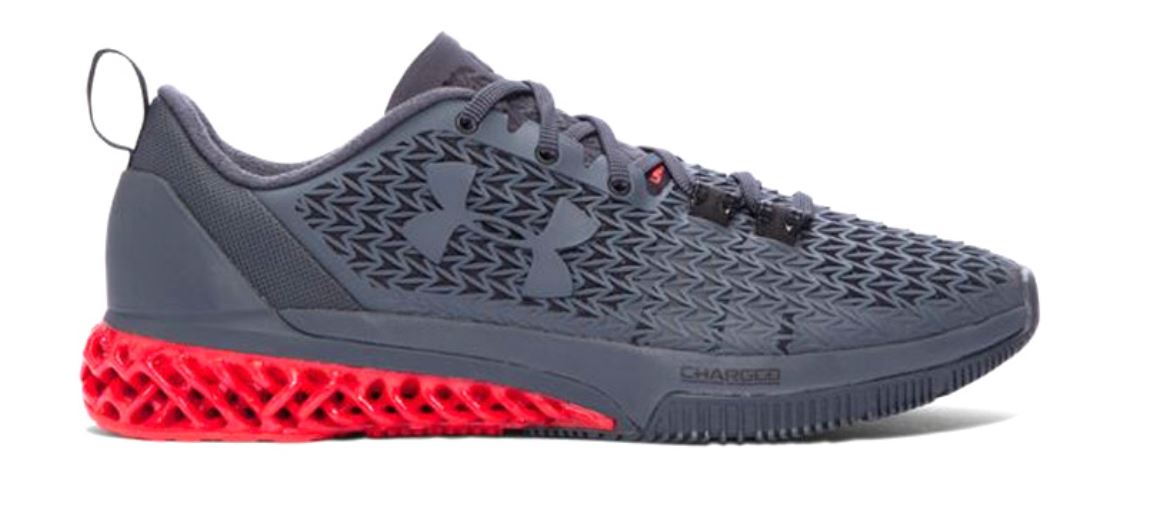On Tuesday, June 28, Under Armour opened the doors to the UA Lighthouse, the new 35,000-square-foot home of its innovation division. The facility, located in Baltimore, provides Under Armour’s designers and partners with tools that enable 3D design and printing, rapid prototyping and the piloting of product lines. The center will also serve as a hub where new product and process technology will be developed before being transferred to factory partners to scale up. Under Armour CEO Kevin Plank envisions the new center as helping to revitalize the area by providing local jobs.
Under Armour’s most recent win in the race to be the leading sportswear maker took place in March, when the company became the first brand to bring a performance shoe with a 3D-printed midsole to market. This was an early step in Plank’s larger plan to reinvent the company’s supply chain, rethink its market approach and reinvigorate the city of Baltimore.

The First 3D-Printed Shoe
In March, when Under Armour released the UA Architech, its shoe with a 3D-printed midsole, it sold out in 19 minutes. Designed in partnership with DuPont, the Architech performance trainers were priced at $300 per pair, and only 96 pairs were made initially. The success of the shoe suggests a positive future for continued innovation from Under Armour.
Nike Follows Suit
Under Armour competitor Nike (NKE) has also experimented heavily with 3D printing, and its new partnership with HP could help it compete more aggressively in the 3D-printed footwear market. HP announced in May that it has developed 3D printers that are faster and cheaper than competing products, and that it is targeting the industrial manufacturing sector. With machines developed for mass production, Nike now has the opportunity to give Under Armour a run for its money in the 3D-printed-footwear space.
Separately, Nike is working with technology solutions company Flex to develop a fully automated factory for manufacturing footwear, and the facility recently produced its first shoes.
“Local for Local” Production
Under Armour’s Plank wants the company to reinvent its supply chain in order to focus on what he calls “local for local” production—the manufacturing of products in the same region in which they are sold. Advanced manufacturing facilities for footwear still require that 150–200 humans physically touch each pair of shoes, but Under Armour notes that Lighthouse will be able to test lean production lines that could bring that number down to 15–20 per product. Once proven, the processes and technologies developed at the Lighthouse can be transferred to factory partners to scale up.
Some products could still take over a year to manufacture, but Plank is excited about the opportunity to have 30%–50% of products manufactured within three weeks. Innovating the supply chain model will enhance loyalty to the brand, since Under Armour will be able to produce goods in the right size, color and design, when customers want them. The company plans to release more 3D-printed products later this year.
Simplicity for a Birdie
Under Armour has also made its entry into the golf market. Rather than producing a full suite of golf products, the company has simplified its approach by sticking to what it knows: apparel and footwear. With its heavy focus on technology, Under Armour can capitalize on its narrow product offering by innovating quickly. Kevin Haley, President of Product and Innovation, commented that Under Armour is the perfect size to offer innovations quickly, that it has the scale to invest millions and that it does not have a multibillion-dollar supply chain standing in its way.
Bringing Jobs Back to Baltimore
The opening of the Lighthouse facility will help bring jobs back to Baltimore and the surrounding areas, providing new employment opportunities for US workers. Plank is passionate about this development, drawing a connection between Baltimore’s hardworking, blue-collar past and his own company’s relentless drive to be the best in sportswear. Sagamore Development, Plank’s real estate firm, announced plans for the development of the Port Covington waterfront area in Baltimore in January. Port Covington is a neighborhood community stretching almost 50 city blocks, and the development plan calls for 7,500 housing units, a hotel, shopping and a new, 4-million-square-foot headquarters for Under Armour.


